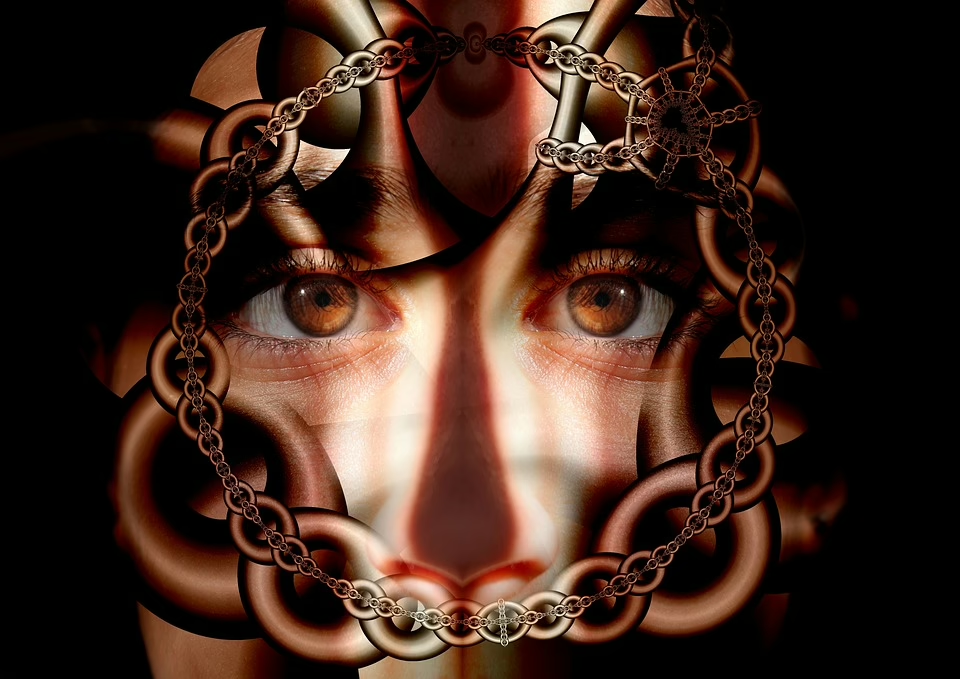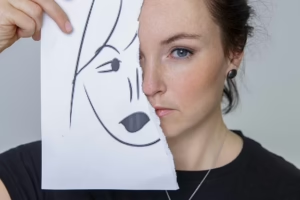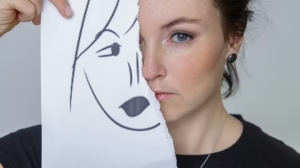Beyond the Spark: Understanding the Complexities of Sexual Attraction
[mfn 1]Sexual attraction, that primal force that draws us together, is often simplified in popular culture as a mere spark – an instant connection, a physical pull that transcends logic. While this initial spark can certainly be a powerful component, a deeper examination reveals a landscape far more nuanced and intricate. It’s a tapestry woven with threads of biology, psychology, social conditioning, personal experiences, and cultural influences. Understanding these complexities is crucial for fostering healthy relationships, navigating our own desires, and appreciating the diversity of human experience. This article delves into the multifaceted nature of sexual attraction, exploring its biological underpinnings, psychological drivers, social influences, and the role of individual experience in shaping our unique preferences.
I. The Biological Blueprint: Hormones, Genetics, and Evolutionary Imperatives
At its core, sexual attraction is rooted in our biological makeup, driven by the fundamental imperative to reproduce and perpetuate our genes. Hormones, genetics, and evolutionary pressures have all played a significant role in shaping our attraction patterns.
A. The Hormonal Symphony:
Hormones are the chemical messengers that orchestrate a wide range of physiological processes, and their influence on sexual attraction is undeniable.
- Testosterone: Often associated with masculinity, testosterone plays a vital role in both male and female sexual desire and arousal. In men, it drives libido, sperm production, and the development of secondary sexual characteristics. In women, while present in lower levels, testosterone contributes to sex drive, energy levels, and muscle mass. Studies have shown a correlation between testosterone levels and sexual activity in both genders [mfn 2].
- Estrogen: Primarily associated with female characteristics, estrogen influences the menstrual cycle, fertility, and the development of secondary sexual characteristics in women. While its direct impact on sexual desire is more complex than testosterone’s, estrogen plays a crucial role in sexual function and responsiveness [mfn 3]. Estrogen also contributes to feelings of attachment and bonding, influencing partner choice.
- Oxytocin: Often referred to as the “love hormone,” oxytocin is released during physical intimacy, such as hugging, kissing, and sexual activity. It promotes feelings of bonding, trust, and attachment, contributing to the development of long-term relationships [mfn 4]. Oxytocin is believed to play a crucial role in pair bonding and the maintenance of social relationships.
- Dopamine: This neurotransmitter is associated with pleasure, reward, and motivation. It plays a key role in the reward system of the brain, reinforcing behaviors that lead to pleasure, including sexual activity. The anticipation and experience of sexual pleasure trigger the release of dopamine, further fueling desire and attraction [mfn 5].
The interplay of these hormones, and others, creates a complex hormonal symphony that influences our sexual desire, arousal, and attraction to others. Hormonal imbalances or fluctuations can significantly impact these processes.
B. The Genetic Code:
While the influence of genetics on sexual orientation is still a subject of ongoing research, evidence suggests that genes play a role in shaping our sexual preferences.
- Twin Studies: Studies involving identical and fraternal twins have provided valuable insights into the heritability of sexual orientation. These studies have consistently shown that identical twins, who share 100% of their genes, are more likely to share the same sexual orientation compared to fraternal twins, who share only 50% of their genes. This suggests a genetic component to sexual orientation [mfn 6].
- Candidate Genes: Researchers have been exploring specific genes that may be associated with sexual orientation. While no single “gay gene” has been identified, studies have pointed to potential candidate genes involved in brain development and hormonal regulation [mfn 7]. However, it’s important to note that sexual orientation is likely influenced by a complex interplay of multiple genes rather than a single genetic factor.
- Epigenetics: Epigenetics, the study of how environmental factors can alter gene expression, is also gaining attention in the context of sexual orientation. Epigenetic modifications can influence the way genes are turned on or off, potentially affecting brain development and sexual preferences [mfn 8].
While genetics may predispose individuals towards certain sexual orientations or preferences, it’s crucial to remember that genes are not destiny. Environmental factors and personal experiences also play a significant role in shaping our sexual identities.
C. Evolutionary Imperatives:
Evolutionary psychology offers insights into how natural selection has shaped our attraction patterns over millennia. The primary goal of evolution is to ensure the survival and reproduction of our genes. Consequently, our attraction patterns have evolved to favor partners who are likely to contribute to successful reproduction and offspring survival.
- Physical Attractiveness: Evolutionary psychology suggests that physical attractiveness serves as a signal of health, fertility, and good genes. Features such as facial symmetry, clear skin, and a healthy body weight are often perceived as attractive because they indicate underlying genetic fitness [mfn 9].
- Resource Acquisition: In many cultures, individuals are attracted to partners who possess resources, such as wealth, status, and social connections. These resources can provide security and stability, increasing the chances of offspring survival [mfn 10].
- Parental Investment: Evolutionary theory posits that women, who invest more time and energy in reproduction and child-rearing, tend to be more selective in their partner choices compared to men. Women may be drawn to partners who demonstrate commitment, stability, and the ability to provide for their offspring.
- Genetic Diversity: Studies have shown that individuals are often attracted to partners with dissimilar immune system genes. This preference for genetic diversity may be driven by the evolutionary advantage of producing offspring with stronger immune systems [mfn 11].
While evolutionary explanations offer valuable insights into the origins of our attraction patterns, it’s important to acknowledge that cultural and social factors also play a significant role in shaping our preferences. Our attractions are not solely determined by our biological imperatives.
II. The Psychological Landscape: Cognition, Emotion, and Attachment Styles
Beyond the biological blueprint, our psychological makeup profoundly influences our sexual attraction. Our thoughts, feelings, and past experiences shape our preferences and influence our choices in relationships.
A. Cognitive Processes:
Our cognitive processes, including our beliefs, values, and perceptions, play a crucial role in shaping our attraction.
- Schemas: We develop cognitive schemas, or mental frameworks, that help us organize and interpret information about the world. These schemas can influence our perception of attractiveness and our expectations in relationships. For example, if someone has a schema that associates intelligence with attractiveness, they may be more drawn to individuals who exhibit intellectual curiosity [mfn 12].
- Attribution Theory: Attribution theory suggests that we try to understand the causes of behavior, including our own attraction to others. We may attribute our attraction to factors such as physical attractiveness, personality traits, or shared interests. These attributions can influence our feelings and behaviors towards the object of our attraction.
- Cognitive Dissonance: Cognitive dissonance occurs when we experience conflicting beliefs or values. This can arise in the context of sexual attraction when our feelings conflict with our values or beliefs. For example, someone who values monogamy may experience cognitive dissonance if they are attracted to someone who is already in a committed relationship [mfn 13].
B. Emotional Influences:
Our emotions are powerful drivers of our behavior, and they play a significant role in shaping our sexual attraction.
- Love: Love, in its various forms, is a powerful emotion that can fuel sexual attraction. Romantic love involves feelings of intimacy, passion, and commitment, while companionate love is characterized by warmth, trust, and affection. These different forms of love can influence the intensity and nature of our sexual attraction [mfn 14].
- Lust: Lust is a strong sexual desire that is often driven by hormonal and biological factors. It can be experienced independently of love and can be a powerful motivator for sexual behavior. While lust can be a component of sexual attraction, it is not always the sole determinant.
- Excitement and Arousal: Novelty, risk, and excitement can enhance sexual attraction. Engaging in activities that stimulate our senses and emotions can increase arousal and make us more receptive to sexual advances.
- Fear and Anxiety: Paradoxically, fear and anxiety can sometimes heighten sexual attraction. This phenomenon, known as misattribution of arousal, occurs when we misattribute our physiological arousal, such as increased heart rate and sweating, to sexual attraction rather than the actual source of our arousal, such as a scary movie or a stressful situation [mfn 15].
C. Attachment Styles:
Attachment theory suggests that our early childhood experiences with caregivers shape our attachment styles, which in turn influence our relationship patterns in adulthood.
- Secure Attachment: Individuals with a secure attachment style tend to have healthy and fulfilling relationships. They are comfortable with intimacy and autonomy and are able to trust their partners [mfn 16].
- Anxious-Preoccupied Attachment: Individuals with an anxious-preoccupied attachment style crave intimacy and fear rejection. They may be overly dependent on their partners and exhibit clingy or demanding behaviors [mfn 17].
- Dismissive-Avoidant Attachment: Individuals with a dismissive-avoidant attachment style value independence and avoid intimacy. They may suppress their emotions and distance themselves from their partners [mfn 18].
- Fearful-Avoidant Attachment: Individuals with a fearful-avoidant attachment style desire intimacy but fear rejection. They may have difficulty trusting others and exhibit ambivalent or contradictory behaviors in relationships [mfn 19].
Our attachment styles can significantly influence our choice of partners and the dynamics of our relationships. Individuals with different attachment styles may be attracted to different qualities in partners and may exhibit different patterns of behavior in relationships.
III. The Social Fabric: Culture, Society, and Learned Preferences
Sexual attraction is not solely determined by biology and psychology; it is also shaped by the social and cultural contexts in which we live. Societal norms, cultural values, and learned preferences play a significant role in shaping our attraction patterns.
A. Cultural Norms and Values:
Cultural norms and values influence our perceptions of attractiveness and appropriate sexual behavior.
- Beauty Standards: Beauty standards vary widely across cultures and historical periods. What is considered attractive in one culture may be considered unattractive in another. For example, body size, skin color, and facial features are all subject to cultural preferences [mfn 20].
- Gender Roles: Cultural norms regarding gender roles can influence our attraction patterns. In some cultures, traditional gender roles are highly valued, and individuals may be attracted to partners who conform to these roles. In other cultures, gender roles are more fluid, and individuals may be attracted to partners who challenge traditional norms.
- Sexual Attitudes: Cultural attitudes towards sexuality can influence our comfort level with expressing our desires and exploring our sexuality. In cultures with restrictive sexual attitudes, individuals may be less likely to openly express their attraction to others or to engage in unconventional sexual behaviors [mfn 21].
B. Social Learning:
We learn about attraction and sexuality through our interactions with others and through exposure to media and popular culture.
- Family Influences: Our families play a significant role in shaping our attitudes towards sex and relationships. Parents’ attitudes towards sexuality, their relationship dynamics, and their communication styles can all influence our own beliefs and behaviors [mfn 22].
- Peer Influences: Our peers can also influence our attraction patterns. We may be influenced by our friends’ preferences and behaviors, and we may feel pressure to conform to social norms.
- Media Influences: Media and popular culture can shape our perceptions of attractiveness and appropriate sexual behavior. Movies, television shows, and advertising often portray idealized versions of beauty and relationships, which can influence our own expectations and desires [mfn 23].
C. Social Constructs:
Social constructs, such as race, class, and sexual orientation, can influence our attraction patterns.
- Race: Racial biases and stereotypes can influence our perceptions of attractiveness and our willingness to form relationships with individuals from different racial backgrounds.
- Class: Social class can influence our attraction patterns, as individuals may be drawn to partners who share similar socioeconomic backgrounds or who offer upward social mobility.
- Sexual Orientation: Sexual orientation is a social construct that categorizes individuals based on their sexual attraction to others. Heterosexuality, homosexuality, and bisexuality are the most common sexual orientations.
Understanding the social and cultural influences on sexual attraction is crucial for challenging biases and promoting inclusivity. By recognizing the role of social conditioning, we can create a more accepting and equitable society where individuals are free to express their authentic selves and pursue relationships that are fulfilling and meaningful.
IV. The Individual Equation: Personal History, Experiences, and Uniqueness
While biology, psychology, and social influences provide a framework for understanding sexual attraction, it’s crucial to acknowledge the role of individual experience in shaping our unique preferences. Our personal history, past relationships, and individual quirks all contribute to the complex equation of sexual attraction.
A. Personal History and Trauma:
Our past experiences, particularly those that involve trauma or significant emotional events, can have a profound impact on our attraction patterns.
- Attachment Trauma: Early childhood experiences of abuse, neglect, or abandonment can lead to attachment trauma, which can disrupt our ability to form healthy relationships in adulthood. Individuals with attachment trauma may be drawn to partners who replicate the dynamics of their early relationships, even if those dynamics are unhealthy or abusive [mfn 24].
- Sexual Trauma: Experiences of sexual abuse or assault can significantly alter our sexual preferences and behaviors. Individuals who have experienced sexual trauma may develop aversions to certain types of touch or sexual activity, or they may engage in risky or self-destructive sexual behaviors [mfn 25].
- Relationship History: Our past relationships can shape our expectations and preferences in future relationships. We may be drawn to partners who possess qualities that we admired in past partners, or we may avoid partners who remind us of negative experiences.
B. Personal Values and Beliefs:
Our personal values and beliefs play a significant role in shaping our attraction patterns.
- Shared Values: We tend to be drawn to partners who share our values and beliefs. Shared values can create a sense of connection and understanding, fostering a strong foundation for a long-term relationship.
- Moral Alignment: Moral alignment, the congruence between our moral values and our partner’s moral values, is important for many individuals. We may be repelled by partners who engage in behaviors that violate our moral principles.
- Spiritual Beliefs: Spiritual beliefs can also influence our attraction patterns. Individuals may be drawn to partners who share their religious or spiritual beliefs, as this can create a sense of shared purpose and meaning.
C. Individual Quirks and Preferences:
Ultimately, sexual attraction is a deeply personal experience. Our individual quirks, preferences, and fantasies all contribute to the unique equation of what attracts us to others.
- Personality Traits: We may be drawn to partners who possess specific personality traits that we admire, such as intelligence, humor, kindness, or ambition.
- Physical Features: While societal beauty standards play a role, our individual preferences for physical features are highly subjective. We may be drawn to certain hair colors, eye colors, body types, or other physical characteristics that others may not find particularly attractive.
- Specific Interests: Shared interests and hobbies can create a sense of connection and make us more attracted to others. We may be drawn to partners who share our passion for music, art, sports, or other activities.
- Fetishes and Kinks: Fetishes and kinks are specific sexual interests or preferences that may involve particular objects, activities, or scenarios. While some fetishes are more common than others, they are ultimately a matter of personal preference and can play a significant role in our sexual attraction to others.
V. Navigating the Landscape: Healthy Relationships, Communication, and Self-Awareness
Understanding the complexities of sexual attraction is not just an academic exercise; it has practical implications for our relationships and our overall well-being. By developing self-awareness, fostering open communication, and embracing healthy relationship dynamics, we can navigate the landscape of sexual attraction with greater confidence and fulfillment.
A. Self-Awareness and Exploration:
The first step towards navigating the complexities of sexual attraction is to develop self-awareness. This involves exploring our own values, beliefs, preferences, and past experiences to gain a deeper understanding of what drives our attraction to others.
- Reflecting on Past Relationships: Examining our past relationships can provide valuable insights into our attraction patterns. What qualities did we admire in our past partners? What patterns of behavior did we find fulfilling or frustrating?
- Exploring Our Fantasies: Our sexual fantasies can provide clues about our deepest desires and preferences. Exploring our fantasies can help us to better understand what we find sexually stimulating and fulfilling.
- Seeking Professional Guidance: If we are struggling to understand our sexual attraction or if we are experiencing difficulties in our relationships, seeking professional guidance from a therapist or counselor can be beneficial.
B. Open Communication and Consent:
Open communication and consent are essential for healthy and fulfilling relationships.
- Communicating Our Desires: It is important to be able to openly and honestly communicate our desires and boundaries to our partners. This requires vulnerability and trust, but it is essential for ensuring that both partners feel comfortable and respected.
- Active Listening: Active listening is a crucial skill for effective communication. It involves paying attention to our partner’s words, body language, and emotions to understand their perspective.
- Affirmative Consent: Affirmative consent means that both partners freely and enthusiastically agree to engage in sexual activity. Consent must be ongoing and can be withdrawn at any time.
C. Embracing Diversity and Challenging Biases:
It is important to embrace the diversity of human sexuality and to challenge our own biases and stereotypes.
- Challenging Beauty Standards: We should challenge the narrow and often unrealistic beauty standards that are perpetuated by media and popular culture. Beauty is subjective and comes in many forms.
- Promoting Inclusivity: We should promote inclusivity and acceptance of all sexual orientations and gender identities. Everyone deserves to feel safe and respected regardless of their sexual preferences.
- Addressing Prejudice: We should actively address prejudice and discrimination based on race, class, sexual orientation, or other social constructs.
D. Fostering Healthy Relationship Dynamics:
Healthy relationship dynamics are characterized by respect, trust, communication, and mutual support.
- Mutual Respect: Both partners should treat each other with respect, valuing each other’s opinions, feelings, and boundaries.
- Trust and Honesty: Trust and honesty are essential for building a strong and lasting relationship. Both partners should be truthful and reliable.
- Effective Communication: Effective communication is crucial for resolving conflicts and maintaining intimacy. Both partners should be able to express their needs and concerns openly and honestly.
- Mutual Support: Both partners should provide emotional support to each other, celebrating successes and offering comfort during times of difficulty.
Conclusion:
Sexual attraction is a complex and multifaceted phenomenon that is influenced by biology, psychology, social conditioning, and individual experience. It’s far more than a simple spark; it’s a dynamic interplay of factors that shape our desires, preferences, and relationships. By understanding the complexities of sexual attraction, we can gain a deeper appreciation for the diversity of human experience, foster healthier relationships, and navigate our own desires with greater self-awareness and confidence. It’s a journey of exploration, communication, and acceptance, ultimately leading to a richer and more fulfilling understanding of ourselves and the connections we forge with others. Moving beyond the simplistic notion of a “spark” allows us to embrace the nuanced reality of human connection and create relationships based on mutual respect, understanding, and authentic attraction.
References:
[mfn 1] This article aims to provide a comprehensive overview of the complexities of sexual attraction, drawing upon various fields of study including biology, psychology, and sociology. [mfn 2] Bhasin, S., et al. (2003). Testosterone dose-response relationships in healthy men. The Journal of Clinical Endocrinology & Metabolism, 88(12), 5617-5626. [mfn 3] Sherwin, B. B. (2003). Estrogen and cognitive functioning in women. Endocrine Reviews, 24(2), 133-151. [mfn 4] Carter, C. S. (1998). Neuroendocrine perspectives on social attachment and affiliation. Annals of the New York Academy of Sciences, 807(1), 754-758. [mfn 5] Pfaus, J. G. (2009). Pathways of sexual desire. The Journal of Sexual Medicine, 6(6), 1506-1533. [mfn 6] Bailey, J. M., Dunne, M. P., & Martin, N. G. (2000). Genetic and environmental influences on sexual orientation and its correlates in an Australian twin sample. Journal of Personality and Social Psychology, 78(3), 524. [mfn 7] Sanders, A. R., et al. (2017). Genome-wide association study of male sexual orientation. Scientific Reports, 7(1), 1-10. [mfn 8] Bocklandt, S., et al. (2006). Identification of methylome differences in monozygotic twins discordant for sexual orientation. Human Molecular Genetics, 15(27), 2823-2834. [mfn 9] Thornhill, R., & Gangestad, S. W. (1999). Facial attractiveness. Trends in Cognitive Sciences, 3(12), 452-460. [mfn 10] Buss, D. M. (1989). Sex differences in human mate preferences: Evolutionary hypotheses tested in 37 cultures. Behavioral and Brain Sciences, 12(1), 1-14. [mfn 11] Wedekind, C., Seebeck, T., Bettens, F., & Paepke, A. J. (1995). MHC-dependent mate preferences in humans. Proceedings of the Royal Society of London. Series B: Biological Sciences, 260(1359), 245-249. [mfn 12] Baldwin, M. W. (1992). Relational schemas and the processing of social information. Psychological Bulletin, 112(3), 461. [mfn 13] Festinger, L. (1957). A theory of cognitive dissonance. Stanford University Press. [mfn 14] Hatfield, E., & Rapson, R. L. (1993). Love and attachment processes. In M. Lewis & J. M. Haviland (Eds.), Handbook of emotions (pp. 591-604). Guilford Press. [mfn 15] Dutton, D. G., & Aron, A. P. (1974). Some evidence for heightened sexual attraction under conditions of high anxiety. Journal of Personality and Social Psychology, 30(4), 510. [mfn 16] Bartholomew, K., & Horowitz, L. M. (1991). Attachment styles among young adults: A test of a four-category model. Journal of Personality and Social Psychology, 61(2), 226. [mfn 17] Hazan, C., & Shaver, P. (1987). Romantic love conceptualized as an attachment process. Journal of Personality and Social Psychology, 52(3), 511. [mfn 18] Bartholomew, K., & Horowitz, L. M. (1991). Attachment styles among young adults: A test of a four-category model. Journal of Personality and Social Psychology, 61(2), 226. [mfn 19] Bartholomew, K., & Horowitz, L. M. (1991). Attachment styles among young adults: A test of a four-category model. Journal of Personality and Social Psychology, 61(2), 226. [mfn 20] Anderson, J. L. (1992). The evolution of beauty. Journal of Sex Research, 29(1), 1-26. [mfn 21] Bancroft, J. (2009). Human sexuality and its problems. WW Norton & Company. [mfn 22] Tolman, D. L., & Diamond, L. M. (2001). Desiring desire: Same-sex attraction and erotic subjectivity in young women. Sexualities, 4(1), 27-61. [mfn 23] Ward, L. M. (2003). Understanding the role of entertainment media in the sexual socialization of American youth: A review of empirical research. Developmental Review, 23(3), 347-388. [mfn 24] van der Kolk, B. A. (2014). The body keeps the score: Brain, mind, and body in the healing of trauma. Viking. [mfn 25] Briere, J. (2006). Psychological assessment of adult posttraumatic states. American Psychological Association.

























Add Comment